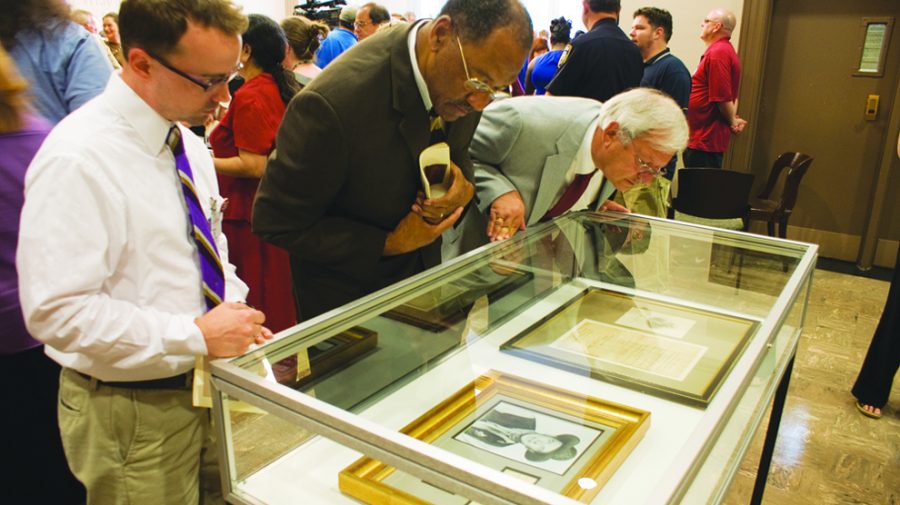On Monday, the University’s libraries received the largest donation in their history, Dean of Libraries Louis Pitschmann said.
Pitschmann accepted the A.S. Williams III Collection of History and Culture of the South in Amelia Gayle Gorgas Library alongside University President Robert Witt.
A.S. Williams III, a UA alumnus, donated more than 20,000 books and 12,000 photographs, which have been appraised at $12 million, Pitschmann said.
“The real importance of the collection is not the monetary value but instead the size and potential for scholarly research and moving the University of Alabama forward,” he said.
Williams, a Eufaula native, graduated from the University in 1958 and has spent more than 40 years collecting manuscripts, books and photographs of Americana. What makes his collection rare, Pitschmann said, is his collection of items pertaining to Southern history.
The Williams Collection includes some 3,000 works of Southern fiction, including many first editions, limited editions, manuscripts and signed copies. The collected works, currently in 1,500 boxes, will move into the third floor of Gorgas and be open to the public in October, Pitschmann said, meaning students will have access to resources that have never been studied.
More than 4,000 images in the collection are the work of Southern photographers from 2,500 different studios, Pitschmann said, and it also contains unpublished letters, diaries and documents written by Alabamians dating back to 1820.
Matt Blumenfeld, a senior majoring in political science, said benefactors like Williams give students at the University opportunities to better themselves as researchers.
“This collection will enrich the research of many undergraduate and graduate students interested in the history of the South and the culture representative of this region,” he said.
Williams said the occasion was bittersweet. After looking for a way to keep the extensive collection together, he said, the University of Alabama seemed an opportune place.
“I am very pleased that it will stay here in Tuscaloosa and be held together,” he said. “This is just ideal to me, that it can be in Tuscaloosa and be a part of the University of Alabama.”
Witt reiterated the significance the donation will have for students.
“[Williams] has entrusted it to the University to help students and scholars,” he said.
The Williams Collection is comprised of smaller sub-collection, Pitschmann said, which includes Southern maps, African American experiences and materials pertaining to the financial history of the United States.
Ashley Hamilton, a sophomore majoring in history and anthropology, said the collection will mean a lot to her academic career at The University of Alabama.
“My focus is on Southern-American history, so this collection will provide new resources to expand my knowledge and understanding,” she said.







